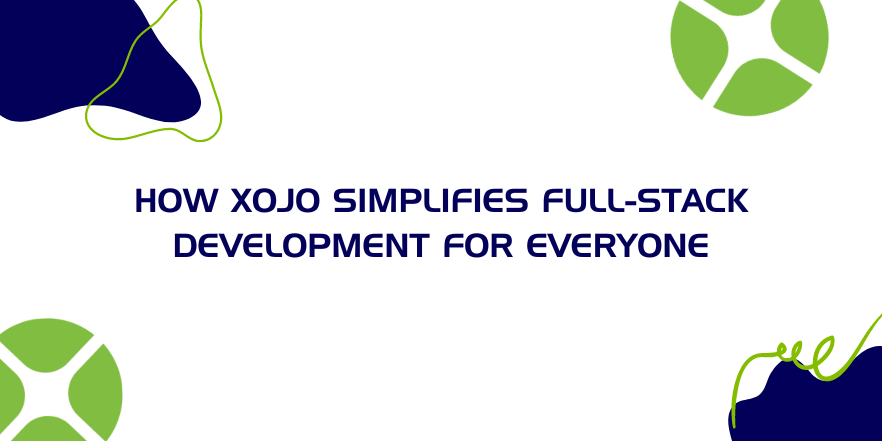We’ve gotten a requests over the last few months asking about Xojo’s support for Windows on ARM and it seems like some people are not…
Comments closedTag: Development
The demand for skilled full-stack developers continues to grow in 2024. These developers handle both the frontend and backend of applications, ensuring a smooth user experience from start to finish. As businesses strive to deliver robust, efficient and visually appealing applications, developers and their choice of programming tools can impact the speed, scalability and overall performance of a full software solution.
Presented with choosing what development tool is best for your main, full-stack development needs, let’s discuss the benefits of Xojo development platform for your next web project. With its simplicity, flexibility, and powerful features, Xojo will help you create high-quality web applications quickly and efficiently, with the added bonus of covering backend and frontend development in the same IDE—no more language switching—while also lowering your overall costs.
Comments closedClean coding is a vital aspect of software development that ensures code readability, maintainability, and scalability. In the context of Xojo, adhering to clean coding principles can significantly enhance the quality and longevity of your projects. In this blog post, we’ll explore key practices for clean coding in Xojo, including the advantages and disadvantages of these approaches, with detailed examples and explanations.
Comments closedIn software development, efficiency and user experience are paramount. One powerful technique that can help achieve both is the use of type casting combined with iteration. By iterating through controls and casting them to specific types, developers can dynamically manipulate user interface elements, resulting in more responsive and interactive applications. In this article, we will explore the concepts of type casting and iteration within Xojo applications. We will break down a practical example to demonstrate how these techniques can be used to optimize form handling and enhance user interactions.
Comments closedA recent blog post, A Beginner’s Guide to Handling Text Files in Xojo, covered the basics of text file handling in Xojo. This post delves into advanced techniques for reading and writing large files in chunks. This method is crucial for managing large datasets efficiently, minimizing memory usage, and maintaining application performance.
1 CommentThe technology and development world is always changing. First released in 1998, Xojo’s longevity is a testament to its ability and willingness to adapt from…
Comments closedNow that Xojo Lite includes support for saving projects in version control format, it seems like a good time to revisit how you can use Xojo with GitHub, the popular online Git hosting service.
Comments closedMonkeybread Software and Christian Schmitz have organized an exceptional event in Germany in just 2 months. Take this opportunity to meet and network with members of the global Xojo Community. Meet Geoff Perlman, Xojo’s Founder & CEO and Xojo Engineers, Javier Menendez and Ricardo Cruz.
Comments closedLast week, I presented the second in a series of Xojo / NetSuite webinars, Using Xojo to Develop NetSuite iOS Apps. You can watch that webinar here. During the webinar, I demonstrated a Xojo-based iOS mobile app that integrates with NetSuite. This blog post is a follow-up to the webinar.
Comments closedXojo is a programming language and development environment for creating cross-platform applications for macOS, Windows and Linux from whatever computer you use – Mac, Windows or Linux. You can also create web, iOS, Android and Raspberry Pi apps with Xojo. To empower students, Xojo has partnered with GitHub to offer Xojo Pro to all students in the GitHub Student Developer Pack. In addition to Xojo, the Pack includes tons of free tools to help students expand their technical knowledge and learn new skills.
Students looking to begin their journey into programming choose Xojo for its ease of use and dedication to cross-platform development. Plus, Xojo is true rapid app development and is ideal for building prototypes and mockups really fast. All of these features benefit from Xojo’s OOP-focus. Xojo also has an active and helpful community and years worth of free, on-line resources.
Comments closed

